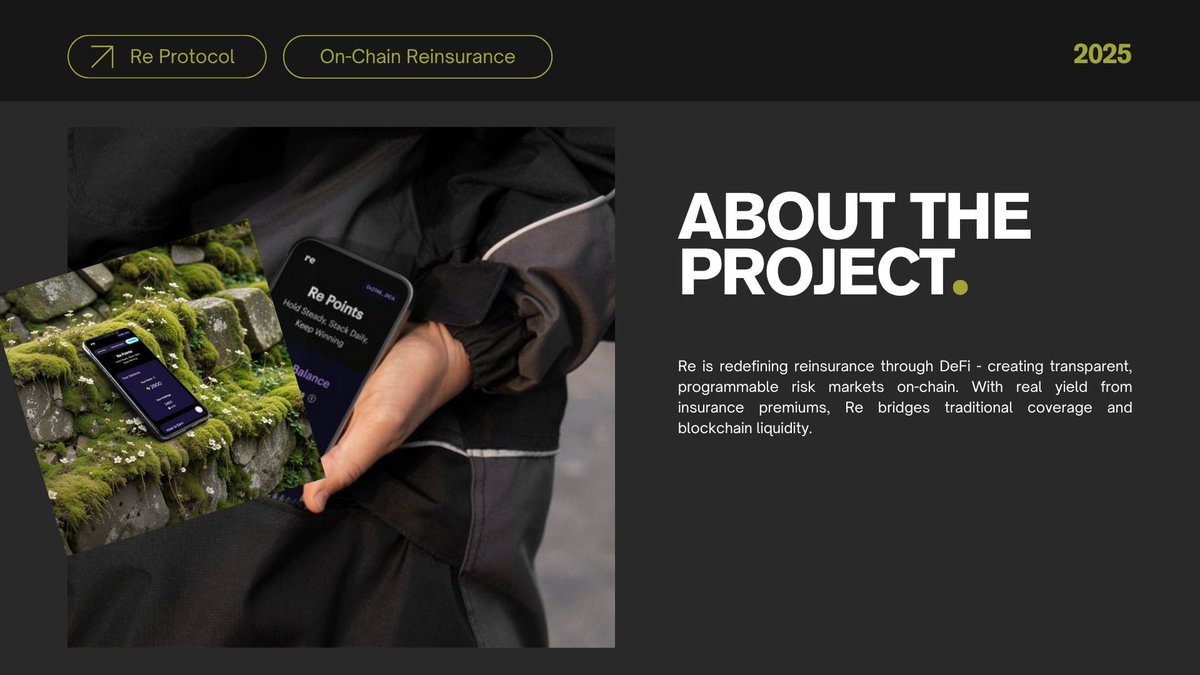
Forget quarterly audits and black-box reporting. In 2025, on-chain reinsurance is all about real-time collateral transparency – and Chainlink Proof of Reserve (PoR) is the engine driving this seismic shift. As institutional appetite for DeFi insurance grows, the need for bulletproof, auditable collateral verification has never been more urgent. Enter Chainlink PoR: a decentralized oracle solution that’s turning opaque trust accounts into open, verifiable data streams on-chain.
Why On-Chain Reinsurance Needs Radical Transparency
The reinsurance world has always been about trust – but historically, that trust was built on periodic reports from third-party custodians, slow-moving audits, and a lot of legal paperwork. Fast forward to today’s DeFi-powered insurance landscape: capital moves at the speed of code, and so do risks. If you’re an investor in tokenized reinsurance pools or an insurer seeking to offload risk through smart contracts, you need to know right now whether the reserves backing those contracts are real, sufficient, and untouched.
This is where blockchain insurance transparency in 2025 hits an inflection point. Platforms like Re, a decentralized reinsurance protocol, have integrated Chainlink PoR to provide continuous proof that every dollar (or stablecoin) of collateral is present and accounted for – not just at settlement time but every second your capital is at risk.
How Chainlink Proof of Reserve Actually Works
The magic behind Chainlink PoR isn’t just marketing hype; it’s a technical leap forward for on-chain reinsurance collateral verification. Here’s how it breaks down:
- Decentralized Oracles: Multiple independent node operators fetch reserve data from custodians or banks holding the actual assets backing reinsurance smart contracts.
- Tamper-Proof Feeds: This data is aggregated and published directly onto blockchains like Ethereum or Avalanche, making it instantly accessible to anyone interacting with the protocol.
- No More Blind Trust: Instead of relying on annual attestations or delayed reports, investors can query on-chain feeds to see exactly how much BTC, ETH, or USDC is locked as collateral – in real time.
This isn’t theory – it’s live right now. For example, Re leverages Chainlink PoR so their users can independently verify the health of tokenized insurance pools before committing capital. It’s a total reversal from legacy models where information asymmetry favored insiders and left investors exposed to hidden risks.
The Impact: Security and Trust Without Compromise
The implications for DeFi reinsurance security are massive. By plugging into decentralized oracle networks like Chainlink PoR, protocols achieve two things simultaneously: they eliminate single points of failure (no more trusting one custodian’s word) and they make smart contract audits actionable in real time (read more here). Every change in reserve status triggers an immediate update on-chain; if there’s a shortfall or unauthorized movement of funds, smart contracts can pause payouts automatically or alert stakeholders before losses spiral out of control.
This level of auditability isn’t just theoretical compliance – it’s practical protection for both sides of the marketplace. Underwriters know their risk exposure is always fully backed; investors know their capital isn’t being rehypothecated or mismanaged behind closed doors. And with regulatory scrutiny ramping up worldwide in 2025, these features aren’t just nice-to-haves – they’re becoming table stakes for any serious player in crypto insurance.
Chainlink (LINK) Price Prediction 2026-2031
Expert insights factoring in the impact of Proof of Reserve adoption and evolving DeFi collateral markets
| Year | Minimum Price | Average Price | Maximum Price | Year-over-Year Change (Avg) | Market Commentary |
|---|---|---|---|---|---|
| 2026 | $12.50 | $16.80 | $22.00 | +19% | Institutional PoR adoption grows, but macro uncertainty persists |
| 2027 | $15.00 | $21.20 | $29.50 | +26% | Regulatory clarity and DeFi insurance expansion boost demand |
| 2028 | $18.50 | $27.30 | $39.00 | +29% | Mainstream integration into traditional finance; increased collateralization of real-world assets |
| 2029 | $23.00 | $34.50 | $50.00 | +26% | Chainlink oracles dominate cross-chain verification, but competition intensifies |
| 2030 | $28.00 | $41.60 | $60.00 | +21% | On-chain insurance and tokenized assets mature; LINK utility at all-time highs |
| 2031 | $33.00 | $49.00 | $72.00 | +18% | Widespread adoption in global finance, but cyclical volatility remains |
Price Prediction Summary
Chainlink (LINK) is poised for steady growth through 2031, driven by the transformative impact of Proof of Reserve in DeFi and on-chain reinsurance. As institutional and regulatory adoption accelerates, LINK’s utility as a decentralized oracle and collateral verifier is expected to grow, though volatility and competition in the oracle space will introduce both bullish and bearish scenarios. Investors should expect progressive price appreciation, with significant upside if Chainlink maintains its technological edge and expands its ecosystem.
Key Factors Affecting Chainlink Price
- Adoption of Proof of Reserve for DeFi insurance and real-world asset collateralization
- Expansion of Chainlink’s oracle network and cross-chain integrations
- Strength of competition from rival oracle solutions and protocols
- Macro market cycles, including crypto bull/bear trends and regulatory shifts
- Institutional and regulatory acceptance of tokenized, on-chain insurance products
- Potential for new use cases and partnerships expanding Chainlink’s utility
Disclaimer: Cryptocurrency price predictions are speculative and based on current market analysis.
Actual prices may vary significantly due to market volatility, regulatory changes, and other factors.
Always do your own research before making investment decisions.
What’s especially game-changing is the speed and granularity of this new paradigm. With Chainlink PoR, collateral balances are updated as frequently as custodians report them, sometimes every few minutes. That means no more waiting for quarterly statements or worrying about “window dressing” right before an audit. Instead, transparency is continuous and verifiable by anyone with a blockchain explorer. This gives reinsurance protocols like Re an institutional-grade edge, attracting both traditional insurers looking to tap into DeFi liquidity and crypto-native investors demanding uncompromising visibility.

Why 2025 Is the Tipping Point for Blockchain Insurance Transparency
Let’s be blunt: the old way of doing things, opaque trust accounts, manual audits, and delayed reporting, is on its way out. In 2025, regulatory regimes across the EU, US, and APAC are tightening requirements around proof of reserves for tokenized risk products. The market is rewarding protocols that can show their work in real time. Chainlink PoR’s adoption by major players like Re isn’t just a technical upgrade; it’s a strategic necessity to stay ahead of compliance curves and win institutional mandates.
The impact is already visible in capital flows. Institutional allocators are increasingly comfortable providing liquidity to tokenized reinsurance pools because they can independently verify collateralization at any moment, no more “trust us” narratives. This unlocks deeper liquidity, tighter spreads, and new opportunities for portfolio diversification within insurance-linked securities (ILS) markets.
What Does This Mean for Active Traders and Institutional Allocators?
If you’re actively trading reinsurance tokens or allocating to insurance smart contracts in 2025, Chainlink PoR gives you a tactical advantage: real-time data feeds that let you react instantly to changes in collateral status or market risk. If a protocol’s reserves dip below required thresholds, even briefly, you’ll know before anyone relying on legacy reporting does. This opens the door to more dynamic risk management strategies and smarter capital allocation across DeFi insurance products.
For underwriters and protocol designers, integrating Chainlink Proof of Reserve isn’t just about compliance, it’s about building trust with a global investor base that expects instant verification as standard operating procedure. The days of opaque books are over; radical transparency is now the default setting for serious players in on-chain reinsurance.
- Continuous Auditing: Automated monitoring means fewer surprises and less operational risk.
- Market Confidence: Transparent reserves attract bigger ticket sizes from professional investors.
- Regulatory Alignment: Real-time proof-of-collateral meets evolving global standards head-on.
Looking Forward: The Future of On-Chain Reinsurance Collateral Verification
The integration of decentralized oracle networks like Chainlink into insurance infrastructure isn’t a passing trend, it’s the new backbone for how risk will be managed in an increasingly digital world. As protocols continue to innovate on top of these trust-minimized data feeds, expect even more granular controls over capital flows, automated claim payouts triggered by objective proofs, and composable insurance products that can plug into any DeFi ecosystem with confidence.
If you want to dive deeper into how this technology works under the hood, or see how other protocols are leveraging it, check out our dedicated guides on real-time transparency in on-chain reinsurance.
The bottom line? In 2025, volatility isn’t just opportunity, it’s fuel for innovation. And with tools like Chainlink Proof of Reserve leading the charge, on-chain reinsurance finally delivers what both crypto natives and institutions crave: uncompromising security without sacrificing speed or flexibility.





